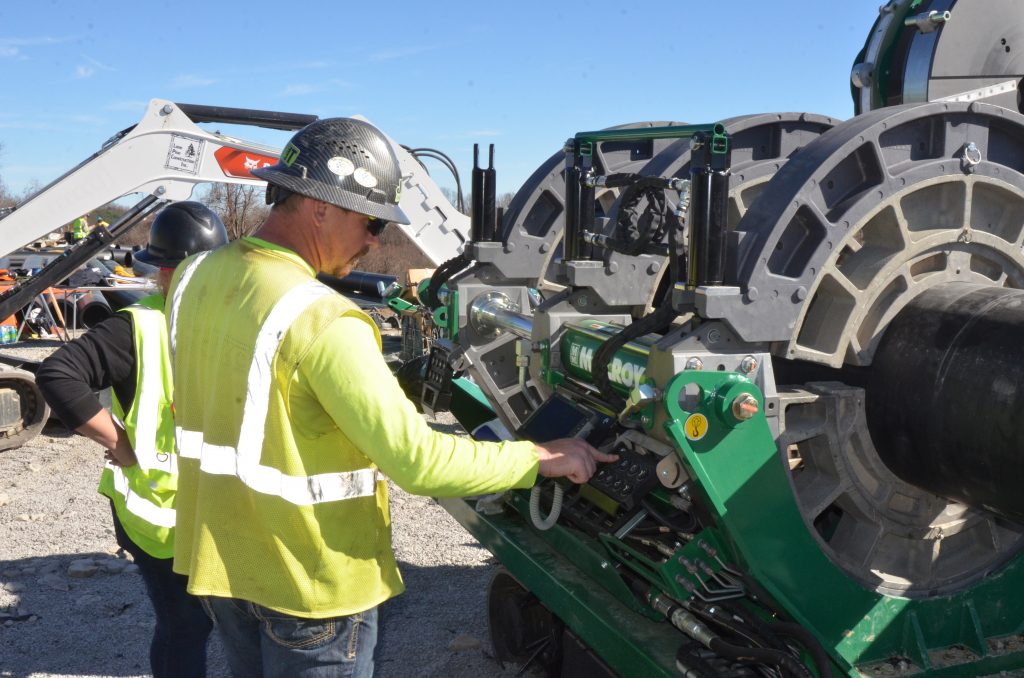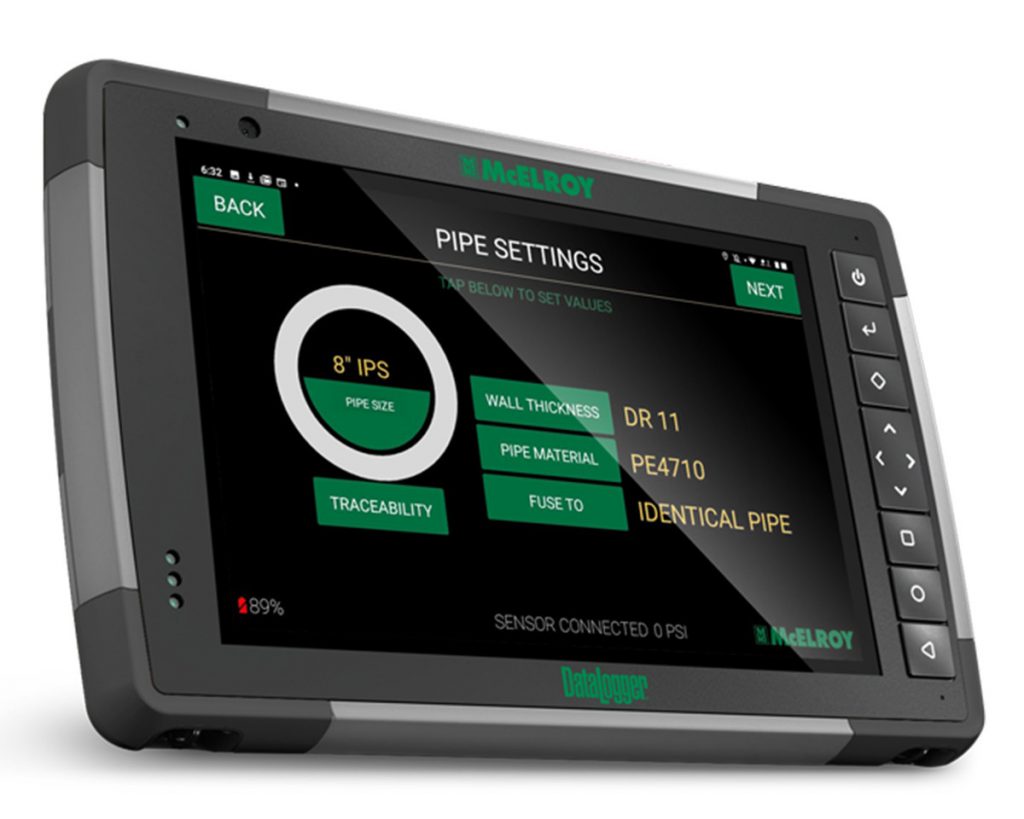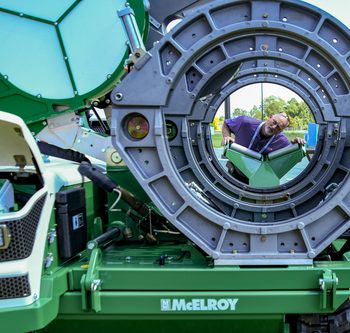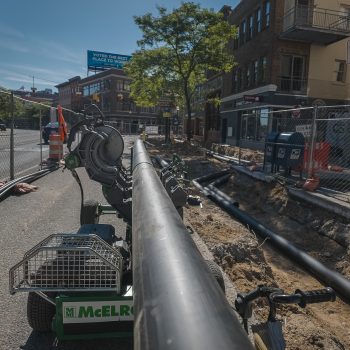In the field, time is money, and downtime caused by machine problems can mean thousands of dollars in unnecessary costs. McElroy continues to pave the way for pipe fusion with remote diagnostic capabilities for its line of fusion machines, bringing support to operators around the world in real time.

Now, when fusing with the TracStar® iSeries, operators and contractors have the ability to work directly with McElroy tech support if there’s a problem with the machine or fusion process.
GET REAL HELP IN REAL TIME
Historically, support calls could be a bit like a game of ‘telephone,’ with a call going to an operator, then a distributor, then McElroy staff. Fusion technicians were asked to take photos or videos of the machine as it worked to illustrate the problem they were having with the machine.
If the issue couldn’t be solved that way, a member of McElroy staff would need to travel to the job site to address it in person, or the machine would need to be taken to another location to be fixed.
When considering the distance between McElroy’s techs in Tulsa, Oklahoma, and operators around the world, that “traditional” way of troubleshooting can mean a lot of time spent waiting for answers. In some remote locations, like in Australia, the job sites are so remote that it can take hours, or even days, to reach them.
That’s where McElroy’s new remote diagnostic capability really shines, by giving operators the ability to directly report problems to McElroy and allowing support staff to remotely connect with the machine and observe its processes.
ACROSS TOWN – OR AROUND THE WORLD
If an operator or contractor is encountering a problem with their TracStar iSeries machine, McElroy technicians can use a hotspot to remotely connect to the machine, accessing the machine’s full CAN traffic. By essentially “seeing what the fusion machine sees,” tech support can then provide help more quickly.
Being able to watch the fusion as it happens can allow technical support to quickly point out any issues – whether directly related to the machine itself or due to unrelated factors like operator error – and get the fusion process up and running again.
For sites that are rural or otherwise isolated, this ability to remotely access the fusion machine can mean hours, even days, saved in terms of time in the field.
A FOCUS ON FUSION

McElroy’s DataLogger® is a staple of the fusion industry, allowing contractors and operators to capture, store, and share fusion data. Existing diagnostic processes already use the DataLogger; making it even more of an integral part of McElroy’s fusion lineup and the fusion process as a whole.
Fusion data recorded by the DataLogger is stored within the Vault™, McElroy’s powerful cloud-based storage platform. With permission, McElroy support staff can access and view Vault data from individual machines or operators.
McElroy’s next planned major update for the DataLogger will broaden the abilities of remote diagnostics, capturing all CAN traffic of the machine during the process. That traffic can then be retroactively viewed for troubleshooting purposes.
This new release will let McElroy tech services view CAN traffic captured when the operator first noticed an issue. If and when an operator reports a problem, support staff only need the user’s Vault account details and the date and time the problem was encountered. Support can then view all information processed through the machine in real time.
Where time zones come into play, that data can also be provided and viewed after the fact, giving insight into the entire process and where the problem might be.
All these features are optional – if operators or contractors don’t wish to share fusion data during the process, they can opt out through the DataLogger’s settings.

